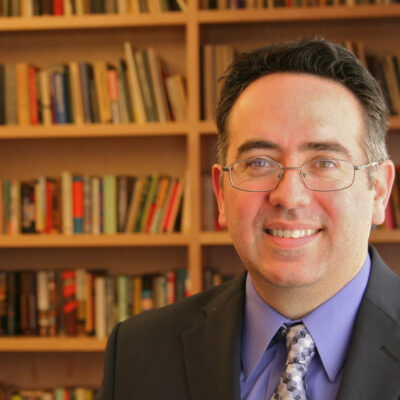
During a debate, which turned to the issue whether creationism should be taught in public schools, O'Donnell questioned her opponent’s assertion that the First Amendment calls for the separation of church and state. "The First Amendment does?" O'Donnell asked. "Let me just clarify: You're telling me that the separation of church and state is found in the First Amendment?"
Her opponent, Chris Coon, responded by quoting the First Amendment’s prohibition that “Congress shall make no law respecting an establishment of religion." "That's in the First Amendment?" O'Donnell again asked. Yes. Yes, it is. The First Amendment states: "Congress shall make no law respecting an establishment of religion, or prohibiting the free exercise thereof; or abridging the freedom of speech, or of the press; or the right of the people peaceably to assemble, and to petition the Government for a redress of grievances." The First Amendment thus sets forth a dual guarantee of religious liberty through what’s known as the Establishment Clause and the Free Exercise Clause.
Together, they operate to protect the religious liberty and freedom of conscience of all Americans. While the First Amendment does not explicitly refer to the separation of church and state, the framers designed the Establishment Clause, in the words of Thomas Jefferson, whose bill in the Virginia legislature later became the foundation for the First Amendment, to “erect a wall between church and state” – a wall that “must be kept high and impregnable.” The Supreme Court has long recognized Jefferson’s metaphor as the guiding principle for understanding the Establishment Clause. The Establishment Clause does not reflect hostility to religion.
To the contrary, “The place of religion in our society is an exalted one, achieved through a long tradition of reliance on the home, the church and the inviolable citadel of the individual heart and mind. We have come to recognize through bitter experience that it is not within the power of government to invade that citadel, whether its purpose or effect be to aid or oppose, to advance or retard. In the relationship between man and religion, the State is firmly committed to a position of neutrality.” Sch. Dist. of Abington Tp., Pa. v. Schempp, 374 U.S. 203, 226 (1963). In our democracy, then, government “must be neutral in matters of religious theory, doctrine, and practice. It may not be hostile to any religion or to the advocacy of no-religion; and it may not aid, foster, or promote one religion or religious theory against another or even against the militant opposite. The First Amendment mandates governmental neutrality between religion and nonreligion.” Epperson v. Arkansas, 393 U.S. 97, 103-104 (1968). The framers prohibited government support or endorsement of religion out of a conviction that the best way to ensure religious freedom was to separate the church from the state so that government could not interfere with or suppress religious views and practices. Religious conflict and persecution pervaded early America, even though most settlers fled England to escape religious intolerance. For example, the Puritans established the Massachusetts Bay Colony as a theocratic state in which Catholics, Quakers and others regarded as heretics were subject to the death penalty. The Catholics who founded Maryland persecuted Protestants and even some Catholics who professed their faith in what were deemed unconventional ways
Gradually, though, church-state separation came to be seen as the key to ending the destructive religious warfare and ensuring religious freedom for all. The framers, moreover, intended the Establishment Clause not only to protect members of minority faiths from government action that is contrary to their religious beliefs, but also to protect members of majority faiths from government action that supports their religious beliefs. Indeed, the record of the adoption of the Establishment Clause reflects a strong concern that government favoritism of a particular religious sect actually would harm that sect, not benefit it.
In commenting on that history, the Supreme Court repeatedly has stated that the Establishment Clause’s “first and most immediate purpose rested on the belief that a union of government and religion tends to destroy government and to degrade religion. . . .” Engel v.Vitale, 370 U.S. 421, 431-32 (1962) (citing James Madison, Memorial and Remonstrance against Religious Assessments (1785)). We urge everyone to read the rule prohibiting the establishment of religion that is neatly stated in the words of the First Amendment.

